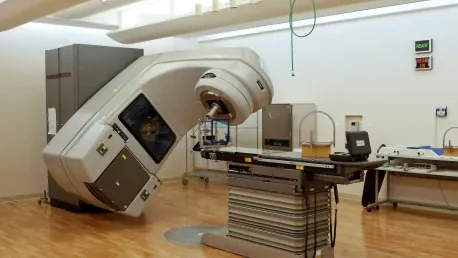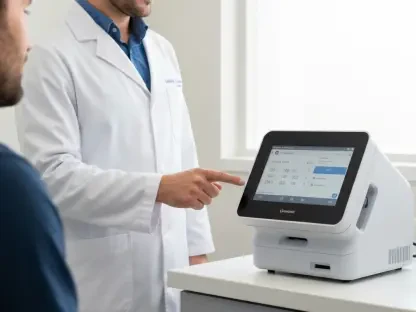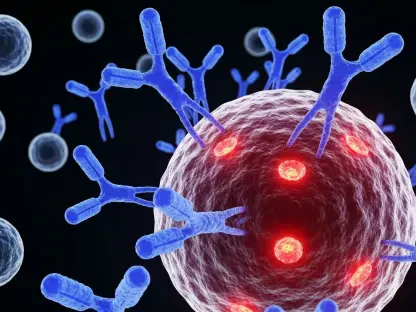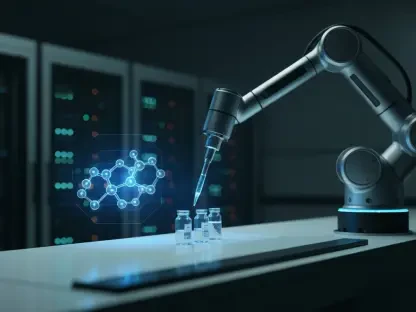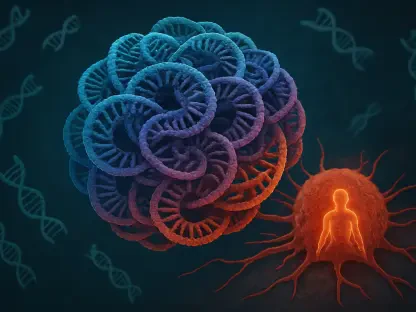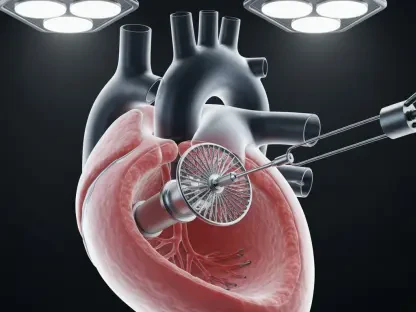As a promising new frontier in cancer treatment, histotripsy represents a significant advancement in non-invasive medical procedures aimed at eliminating tumors. The technique utilizes bubbles generated via precise ultrasound waves to target and destroy specific cancer cells. Notably, histotripsy eschews traditional methods such as incisions, radiation, surgery, or heat applications, thereby preserving the integrity of surrounding tissues. This innovative treatment was sanctioned by the US Food and Drug Administration (FDA) in October 2023 for application on liver tumors. In Asia, the procedure has seen successful application on approximately 50 cancer patients in Hong Kong, signifying a growing acceptance and application of this advanced therapeutic method.
Introduction to Histotripsy
Histotripsy is set to be introduced in Singapore, primarily targeting liver cancer patients initially. This initiative is bolstered through donations of histotripsy machines from the Li Ka Shing Foundation and Temasek Trust. These machines will be installed at the National Cancer Centre Singapore (NCCS) and the National University Cancer Institute, Singapore (NCIS). A combined investment of $12 million has been pledged to facilitate these trials and extend the treatment’s application to kidney and pancreatic cancers. Key stakeholders such as Ms. Ho Ching, chairman of Temasek Trust, and billionaire Li Ka Shing have publicly expressed their profound confidence in the groundbreaking potential of histotripsy.
The introduction of histotripsy in Singapore underscores a critical development in the global fight against cancer. Unlike conventional methods that involve invasive procedures or reliance on thermal energy, histotripsy harnesses mechanical energy to obliterate cancer cells. By eliminating the need for incisions and reducing risks to healthy tissues, histotripsy offers a promising alternative for liver cancer patients, especially those unable to undergo conventional treatments due to various health complications. The substantial investment and high-profile support for this initiative reflect the excitement and hope surrounding this novel approach.
Clinical Trials and Key Personnel
Professor Brian Goh, a prominent expert in hepatopancreatobiliary and transplant surgery at Singapore General Hospital and NCCS, is leading the clinical trials. The initial phase involves 40 liver cancer patients who have been deemed unsuitable for existing treatments. Typically, these are patients with late-stage liver cancer or those undergoing other cancer therapies without response in some liver lesions. Histotripsy aims to address the constraints posed by current surgical and local ablative treatments, which can often be invasive and unsuitable for patients with underlying health concerns.
Histotripsy leverages mechanical energy to eradicate cancer cells, minimizing potential side effects compared to treatments utilizing thermal energy like radiofrequency or microwaves. Professor Goh’s involvement as the principal investigator ensures that the trials will be conducted with rigor and precision, focusing on assessing the treatment’s efficacy and safety across diverse patient profiles. The initial trials will provide valuable data on histotripsy’s effectiveness in targeting hard-to-treat liver cancer cases, laying the groundwork for broader applications in oncology.
Operational Mechanism of Histotripsy
The term “histotripsy” is derived from the Greek words for “soft tissue” (histo) and “mechanical breakdown” (tripsy). Pioneered by University of Michigan biomedical engineer Zhen Xu, the procedure involves using a device to generate ultrasound waves that create microbubbles in the targeted cancerous tissue. These bubbles then rapidly expand and collapse, effectively liquefying the tumor and eradicating cancer cells. Remarkably, this treatment is completed in a single session lasting four minutes and requires patients to be under general anesthesia for stability. Post-treatment, patients can typically return home immediately, often experiencing no pain.
Histotripsy stands out due to its remarkable precision and non-invasiveness. By leveraging mechanical forces, this treatment ensures that only cancerous tissues are targeted, leaving surrounding healthy tissues unharmed. This precision reduces the likelihood of adverse effects that are commonly associated with thermal ablation or surgical interventions. The simplicity and efficiency of histotripsy, with just a single short session required, offer potential improvements in patient outcomes and convenience. This technological breakthrough could revolutionize the way certain cancers are treated, making the process less daunting and more manageable for patients.
Previous and Upcoming Trials
Histotripsy trials have a storied history, beginning with the inaugural liver cancer trial in 2019. This was followed by the larger-scale Hope4Liver trial in 2021, culminating in the FDA’s endorsement in 2023. Over 1,000 patients in the US have since received histotripsy treatments. Currently, research efforts are expanding to explore histotripsy’s efficacy in treating other cancers such as kidney and pancreatic cancers. Notably, a multi-center Hope4Kidney trial commenced the following year in the US and Europe, while a pancreatic cancer trial followed shortly thereafter.
These previous trials have established a firm foundation for the continued exploration of histotripsy’s capabilities. The consistent positive outcomes and favorable safety profiles reported from these trials have spurred interest in expanding the scope of histotripsy’s applications. The promising results have driven further investments and research efforts to examine the procedure’s potential in treating different types of cancer. In Singapore, the upcoming clinical trials will build upon this existing knowledge, leveraging the expertise gained from previous studies to optimize treatment protocols and expand patient eligibility.
Potential Broader Implications and Challenges
Early results from histotripsy treatments suggest the possibility of the procedure triggering the immune system to attack non-targeted tumors, an intriguing development noted by Prof Xu and Singapore researchers. This immunological response will be a focal point for further examination in Singapore, alongside assessments of patient response rates and potential complications. The interplay between histotripsy and the immune system opens new avenues for research, potentially leading to synergistic therapies that enhance overall treatment effectiveness.
While histotripsy has shown immense promise, it is important to acknowledge the limitations and challenges. For instance, the US Hope4Liver trial highlighted a 6.8% complication rate — a figure reflective of the focal liver therapies’ typical risks rather than specifics unique to histotripsy. Additionally, the small initial trial pool comprised exclusively Caucasian patients, indicating the necessity for broader demographic studies to establish comprehensive safety and efficacy profiles. Histotripsy is not yet positioned to supplant existing treatments for liver cancers, as long-term safety data remains absent. The treatment is also inappropriate for patients with widespread or systemic cancer, further emphasizing the need for careful patient selection.
Conclusion
Histotripsy, a promising frontier in cancer treatment, is making significant strides in non-invasive medical procedures focused on eliminating tumors. This groundbreaking technique employs ultrasound waves to create bubbles that precisely target and destroy specific cancer cells. Importantly, histotripsy avoids conventional methods such as incisions, radiation, surgery, or heat application, ensuring the integrity of surrounding tissues is maintained. Approved by the US Food and Drug Administration (FDA) in October 2023 for use on liver tumors, this procedure marks a notable advancement in cancer therapy. In Asia, the technique has been successfully applied to about 50 cancer patients in Hong Kong, indicating its growing acceptance and implementation in the region. The success of histotripsy highlights its potential to revolutionize cancer treatment by offering a less invasive and more targeted approach. As research continues, it holds promise for broader applications and improved outcomes for patients battling various types of cancer.
